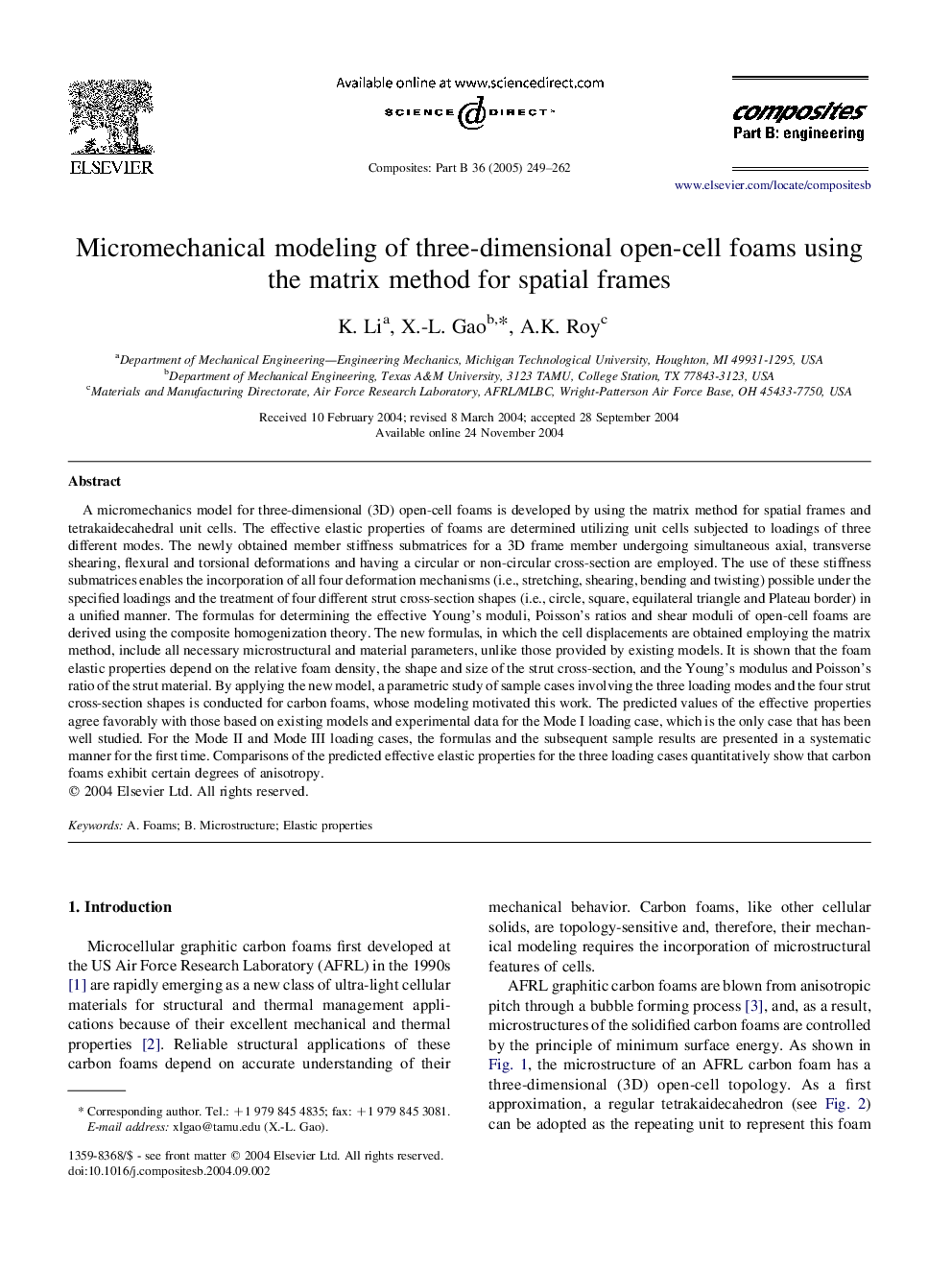| کد مقاله | کد نشریه | سال انتشار | مقاله انگلیسی | نسخه تمام متن |
|---|---|---|---|---|
| 10424714 | 906562 | 2005 | 14 صفحه PDF | دانلود رایگان |
عنوان انگلیسی مقاله ISI
Micromechanical modeling of three-dimensional open-cell foams using the matrix method for spatial frames
دانلود مقاله + سفارش ترجمه
دانلود مقاله ISI انگلیسی
رایگان برای ایرانیان
موضوعات مرتبط
مهندسی و علوم پایه
سایر رشته های مهندسی
مهندسی (عمومی)
پیش نمایش صفحه اول مقاله

چکیده انگلیسی
A micromechanics model for three-dimensional (3D) open-cell foams is developed by using the matrix method for spatial frames and tetrakaidecahedral unit cells. The effective elastic properties of foams are determined utilizing unit cells subjected to loadings of three different modes. The newly obtained member stiffness submatrices for a 3D frame member undergoing simultaneous axial, transverse shearing, flexural and torsional deformations and having a circular or non-circular cross-section are employed. The use of these stiffness submatrices enables the incorporation of all four deformation mechanisms (i.e., stretching, shearing, bending and twisting) possible under the specified loadings and the treatment of four different strut cross-section shapes (i.e., circle, square, equilateral triangle and Plateau border) in a unified manner. The formulas for determining the effective Young's moduli, Poisson's ratios and shear moduli of open-cell foams are derived using the composite homogenization theory. The new formulas, in which the cell displacements are obtained employing the matrix method, include all necessary microstructural and material parameters, unlike those provided by existing models. It is shown that the foam elastic properties depend on the relative foam density, the shape and size of the strut cross-section, and the Young's modulus and Poisson's ratio of the strut material. By applying the new model, a parametric study of sample cases involving the three loading modes and the four strut cross-section shapes is conducted for carbon foams, whose modeling motivated this work. The predicted values of the effective properties agree favorably with those based on existing models and experimental data for the Mode I loading case, which is the only case that has been well studied. For the Mode II and Mode III loading cases, the formulas and the subsequent sample results are presented in a systematic manner for the first time. Comparisons of the predicted effective elastic properties for the three loading cases quantitatively show that carbon foams exhibit certain degrees of anisotropy.
ناشر
Database: Elsevier - ScienceDirect (ساینس دایرکت)
Journal: Composites Part B: Engineering - Volume 36, Issue 3, April 2005, Pages 249-262
Journal: Composites Part B: Engineering - Volume 36, Issue 3, April 2005, Pages 249-262
نویسندگان
K. Li, X.-L. Gao, A.K. Roy,